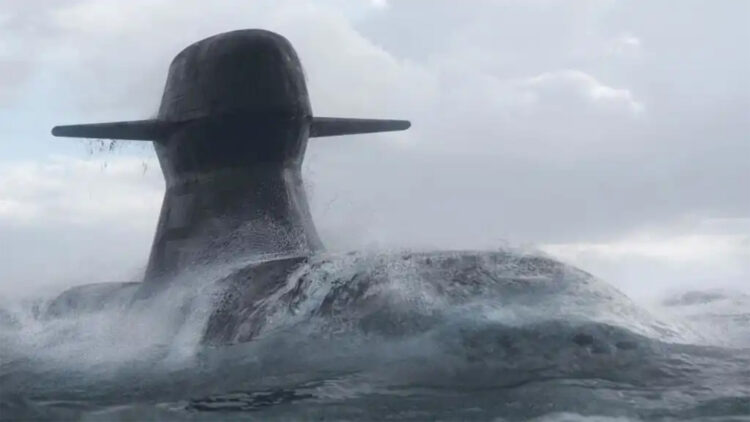The Swedish company Saab has presented the A26 submarine, which the company calls the first fifth-generation submarine in the world. The goal of this new ship, that was built for the Swedish Navy and is compatible with NATO, is to remain undetected, collect intelligence, and collaborate with other forces in cyberspace, on land, at sea, in the air, and even in space.
Saab states that “meeting the demands of modern Multi-Domain Operations requires the most advanced technologies available. With the A26, we are offering a submarine that brings unmatched stealth, flexibility, and integration across all operational domains.”
“the most cutting-edge technologies are needed to meet the demands of modern Multi-Domain Operations.” They are providing a submarine with superior concealment, adaptability, and integration in all operational areas with the A26.
The submarine is designed for long-range precision strikes, ISR (intelligence, surveillance, and reconnaissance) missions, and even seabed warfare, where countries fight over cables and other infrastructure on the ocean floor. It stays underwater for long periods of time without coming out thanks to Stirling AIP (Air-Independent Propulsion), which is essential for undersea combat. It can also deploy special forces and unmanned underwater vehicles (UUVs), making it a flexible underwater platform for many kinds of missions.
Stealth, sensors, and seabed missions
Stealth is a key component of the A26 submarine. According to Saab, it employs “balanced multi-domain signatures,” which basically means it makes multiple simultaneous attempts to be as difficult to detect as possible. Its sound, radar, magnetic, and electric “fingerprints” are reduced by sophisticated hull shapes, radar-absorbing coatings, and an electronic degaussing system.
The Stirling AIP system helps the A26 stay undetectable by allowing it to stay underwater for a long time without rising to the surface for air. According to Saab, this ability to operate covertly, is one of the best skills because it can conduct ISR missions while hidding, collect information on enemy territories, communicate, and radar emissions in open ocean or shallow coastal waters.
Additionally, the A26 can deploy special operations forces straight from the submarine or launch unmanned underwater vehicles (UUVs) thanks to its modular payload bays. With this, commanders can secure their sea routes, keep an eye on maritime chokepoints, and monitor or protect underwater communication cables. It can also carry submarine-launched cruise missiles and is equipped with long-range precision torpedoes, which gives it significant strike power against targets on land as well as ships at sea. According to Saab, this adaptability gives commanders the ability to “strike across domains from below the surface.”
Information, electronic intelligence, and MDO
Additionally, the submarine it’s designed for “underwater information warfare.” Without revealing its location, its electronic surveillance systems are able to secretly intercept and categorize enemy signals. Electronic intelligence is essential in this situation. The A26 can assist larger intelligence networks and defend or jeopardize submerged infrastructure, like data cables, by mapping enemy communications and radar patterns.
The company explains the submarine can also perform passive electronic support missions, providing information into NATO systems, increasing Multi-Domain Operations (MDO) awareness. Commanders can make decisions more quickly and coordinate with other forces more efficiently thanks to the submarine’s onboard artificial intelligence (AI), which processes all of the data from its sensors fast.
Saab highlights: “Freedom of movement, stealth, and ISR make submarines critical to MDO. The A26 adds new flexibility to that mix, allowing commanders to coordinate and execute operations across all domains.”
A new kind of undersea platform
NATO and the Swedish Navy could combine a number of highly useful tools into a single platform. The submarine offered by Saab shows they can do more than just firing torpedoes.
